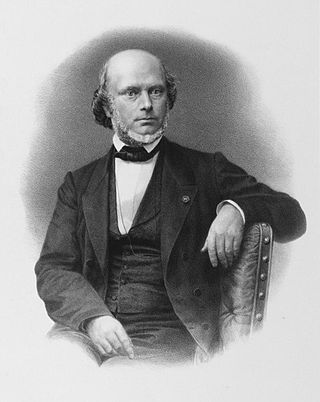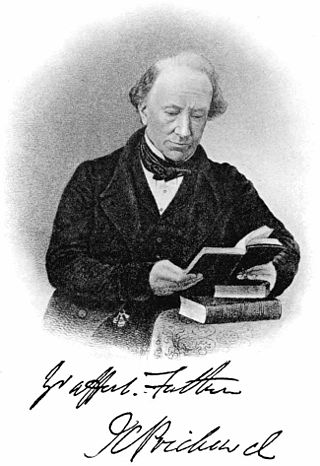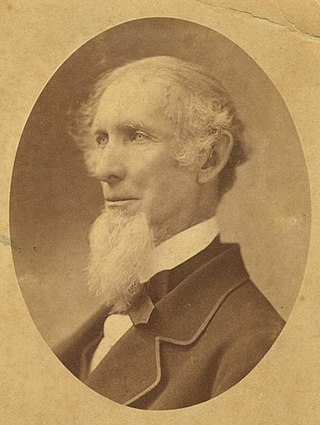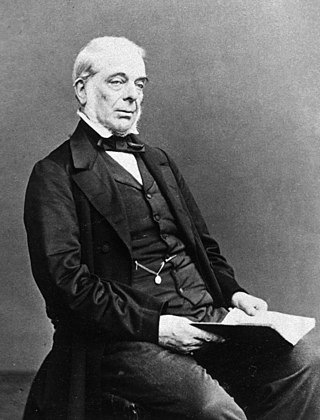Related Research Articles

Biological anthropology, also known as physical anthropology, is a scientific discipline concerned with the biological and behavioral aspects of human beings, their extinct hominin ancestors, and related non-human primates, particularly from an evolutionary perspective. This subfield of anthropology systematically studies human beings from a biological perspective.
The Ethnological Society of London (ESL) was a learned society founded in 1843 as an offshoot of the Aborigines' Protection Society (APS). The meaning of ethnology as a discipline was not then fixed: approaches and attitudes to it changed over its lifetime, with the rise of a more scientific approach to human diversity. Over three decades the ESL had a chequered existence, with periods of low activity and a major schism contributing to a patchy continuity of its meetings and publications. It provided a forum for discussion of what would now be classed as pioneering scientific anthropology from the changing perspectives of the period, though also with wider geographical, archaeological and linguistic interests.
The Anthropological Society of London (ASL) was a short-lived organisation of the 1860s whose founders aimed to furnish scientific evidence for white supremacy which they construed in terms of polygenism. It was founded in 1863 by Richard Francis Burton and James Hunt. Hunt had previously been the secretary of the Ethnological Society of London, which was founded in 1843. When he founded the breakaway ASL, Hunt claimed that society had "the object of promoting the study of Anthropology in a strictly scientific manner". Nevertheless he reminded his audience that, whatever evidence might be uncovered, "we still know that the Races of Europe now have much in their mental and moral nature which the races of Africa have not got." The ASL only lasted 8 years: following Hunt's death in 1869 it was absorbed into the Royal Anthropological Institute of Great Britain and Ireland.
The concept of race as a categorization of anatomically modern humans has an extensive history in Europe and the Americas. The contemporary word race itself is modern; historically it was used in the sense of "nation, ethnic group" during the 16th to 19th centuries. Race acquired its modern meaning in the field of physical anthropology through scientific racism starting in the 19th century. With the rise of modern genetics, the concept of distinct human races in a biological sense has become obsolete. In 2019, the American Association of Biological Anthropologists stated: "The belief in 'races' as natural aspects of human biology, and the structures of inequality (racism) that emerge from such beliefs, are among the most damaging elements in the human experience both today and in the past."
Scientific racism, sometimes termed biological racism, is the pseudoscientific belief that the human species can be subdivided into biologically distinct taxa called "races", and that empirical evidence exists to support or justify racism, racial inferiority, or racial superiority. Before the mid-20th century, scientific racism was accepted throughout the scientific community, but it is no longer considered scientific. The division of humankind into biologically separate groups, along with the assignment of particular physical and mental characteristics to these groups through constructing and applying corresponding explanatory models, is referred to as racialism, race realism, or race science by those who support these ideas. Modern scientific consensus rejects this view as being irreconcilable with modern genetic research.

The Descent of Man, and Selection in Relation to Sex is a book by English naturalist Charles Darwin, first published in 1871, which applies evolutionary theory to human evolution, and details his theory of sexual selection, a form of biological adaptation distinct from, yet interconnected with, natural selection. The book discusses many related issues, including evolutionary psychology, evolutionary ethics, evolutionary musicology, differences between human races, differences between sexes, the dominant role of women in mate choice, and the relevance of the evolutionary theory to society.

Jean Louis Armand de Quatrefages de Bréau was a French biologist.

John Bachman was an American Lutheran minister, social activist and naturalist who collaborated with John James Audubon to produce Viviparous Quadrupeds of North America and whose writings, particularly Unity of the Human Race, were influential in the development of the theory of evolution. He was married to the painter Maria Martin. Several species of animals are named in his honor.

James Cowles Prichard was a British physician and ethnologist with broad interests in physical anthropology and psychiatry. His influential Researches into the Physical History of Mankind touched upon the subject of evolution. From 1845, Prichard served as a Medical Commissioner in Lunacy. He also introduced the term "senile dementia".

The pre-Adamite hypothesis or pre-Adamism is the theological belief that humans existed before the biblical character Adam. Pre-Adamism is therefore distinct from the conventional Abrahamic belief that Adam was the first human. "Pre-Adamite" is used as a term, both for those humans believed to exist before Adam, and for believers or proponents of this hypothesis.

Samuel George Morton was an American physician, natural scientist, and writer. As one of the early figures of scientific racism, he argued against monogenism, the single creation story of the Bible, instead supporting polygenism, a theory of multiple racial creations.
Polygenism is a theory of human origins which posits the view that the human races are of different origins (polygenesis). This view is opposite to the idea of monogenism, which posits a single origin of humanity. Modern scientific views find little merit in any polygenic model due to an increased understanding of speciation in a human context, with the monogenic "Out of Africa" hypothesis and its variants being the most widely accepted models for human origins. Polygenism has historically been heavily used in service of white supremacist ideas and practices, denying a common origin between European and non-European peoples. It can be distinguished between Biblical polygenism, describing a Pre-Adamite or Co-Adamite origin of certain races in the context of the Genesis narrative of Adam and Eve, and scientific polygenism, attempting to find a taxonomic basis for ideas of racial science.

Robert Gordon Latham FRS was an English ethnologist and philologist.

Josiah Clark Nott was an American surgeon, anthropologist and ethnologist. He is known for his studies into the etiology of yellow fever and malaria, including the theory that they are caused by germs, and for his espousal of scientific racism.
In historical or evolutionary linguistics, monogenesis and polygenesis are two different hypotheses about the phylogenetic origin of human languages. According to monogenesis, human language arose only once in a single community, and all current languages come from the first original tongue. On the other hand, according to the polygenesis, human languages came into being in several communities independently, and current tongues derived from different sources.
Mongoloid is an obsolete racial grouping of various peoples indigenous to large parts of Asia, the Americas, and some regions in Europe and Oceania. The term is derived from a now-disproven theory of biological race. In the past, other terms such as "Mongolian race", "yellow", "Asiatic" and "Oriental" have been used as synonyms.

Robert Dunn was a British surgeon.
The discovery of human antiquity was a major achievement of science in the middle of the 19th century, and the foundation of scientific paleoanthropology. The antiquity of man, human antiquity, or in simpler language the age of the human race, are names given to the series of scientific debates it involved, which with modifications continue in the 21st century. These debates have clarified and given scientific evidence, from a number of disciplines, towards solving the basic question of dating the first human being.

William Frédéric Edwards (1777–1842) was a French physiologist, of Jamaican background, who was also a pioneer anthropologist. He has been called "the father of ethnology in France". He is remembered largely for his principle of the permanency of physical "types." He was also a leader in the new science of "linguistique" and proposed a new branch of comparative philology based on pronunciation.

Thomas Smyth was an American Presbyterian minister. He served as minister of Second Presbyterian Church in Charleston, South Carolina for more than 40 years, from 1832 until his death.
References
- Kung, Hans (Translated by John Bowden), The Beginning of All Things: Science and Religion, 2008, Wm. B. Eerdmans Publishing, ISBN 0802863590, 9780802863591